
Creating the first labels for your new product line is an exciting time. You are so close to getting your cosmetics out into the world. This is where you get to be creative and express your brand’s unique vision and ideals for all to see. As awesome as it is to reach this stage, don’t forget that there are still some regulatory guidelines that you will need to follow to ensure your new label designs comply with federal regulations supplied by the Food, & Drug Administration (FDA).
Both the Federal Food, Drug, and Cosmetic Act (FD&C Act) and the Fair Packaging and Labeling Act (FP&L Act) were created to protect consumers from harm or fraud caused by cosmetics with inaccurate or misleading labels.
The Federal Food, Drug, and Cosmetic Act (FD&C Act) defines a cosmetic as:
“...articles intended to be rubbed, poured, sprinkled, or sprayed on, introduced into, or otherwise applied to the human body or any part thereof for cleansing,
beautifying, promoting attractiveness, or altering the appearance…”
– Federal Food, Drug, and Cosmetic Act (FD&C Act)
The FD & C Act definition covers cosmetic products from skin creams, make-up, and shampoos to perfumes, nail polish, hair dyes, and other chemical hair treatments. Personal care products that claim to treat or prevent disease or those that do “affect the structure or function of the body” are classified as drugs and must comply with both the cosmetic product listing requirements and any drug regulations.
If you are just beginning to plan your packaging and label design, now is the time to familiarize yourself with the current federal listing requirements for cosmetics to avoid potentially costly legal issues and design or packaging changes further down the road.
Getting your labels right from the very first production line will save you time, money, and stress. We have created this easy-to-follow cosmetics labeling guide addressing 5 core cosmetic labeling regulations to help you get started.
1. Ingredient Declaration
The cosmetics ingredients list on the cosmetic label is far more than a simple listing of the product’s active ingredients. Federal regulation (21 cfr 701.3) directs not only which items must be listed, but also the words that must be used to describe ingredients, the order in which the ingredients must be listed, and the visibility of the list.
The Ingredients Declaration must:
- Be printed on at least one information panel of the cosmetics label or packaging
- Be printed in a legible font at least 1/16 an inch in height (>1/32” for packages smaller than 12” square)
- Include all product ingredients listed in descending order of predominance starting with the active ingredients (if applicable) and finishing with any cosmetic additives for color or scent.
Official Ingredient Names
Additionally, all ingredients must be identified using the approved name as established by the Commissioner. When no approved name is listed for an ingredient in the current Commisioner’s list then a name must be sourced from a list of alternative editions and volumes starting with the first volume listed and continuing in the order listed until a name has been identified. If no name is found listed in any of the compendia then the ingredient should be listed by the name that will be most recognizable to the consumer, or by its chemical or technical name.
2. Font Legibility
All information printed on any panel of the cosmetic label or packaging should be rendered in a legible font in a size large enough to be obvious and easy to read by consumers. FDA guidelines define this to mean a font size of 1/16” or larger. If the overall printable packaging size is smaller than 12” square, a font size of 1/32” or larger can be used instead.
Font Colors & Other Considerations
Regardless of size, all printed text must be clearly visible and not crowded or covered by other text or imagery. Additionally, there must be adequate contrast between the color of the font and the background color so that the text is conspicuous and easy to read.
3. English & Foreign Language Information & Warnings
The FDA directs that all products to be sold in the United States must have all required information printed on the label or packaging in the English language. Products that will be sold exclusively in Puerto Rico or other US territories where English is not the dominant language can be printed in the area's dominant language. Cosmetic product labels containing any foreign language must have all required information printed in English as well as the foreign language.
Language of Safety Warnings
In instances where a safety warning or a legal statement is required to be issued regarding a certain ingredient or claim, the information must be conveyed using the exact wording specified by the FDA. The FDA makes these warnings and disclaimers available on the official website and they must appear on the product label with all provided wording identical to that shown on the official website.
4. Principal Display Panel Requirements

The FDA considers the portion of the label that will be most visible to a consumer in a retail setting to be the Principle Display Panel (PDP). This will commonly be the front panel of the product label. The PDP must have prominant positioning taking up the majority of any labeling on the face of the product or the face of the packaging containing the product.
The brand name and product identity description should appear prominently on the PDP, along with any required safety warnings, and a statement of the net quantity of product included.
The PDP must include:
- The brand name of the product
- A product identity description (i.e. skin cream, nail polish, eye shadow, etc.)
- The net quantity of contents (i.e. unit count, net weight, volume etc.)
- § 740.10 safety warning (if applicable)
5. Manufacturer Information
Cosmetic product labels are also required to display the current contact information (name and address) for the main business entity responsible for the manufacture and distribution of the product. If the corporate ownership name is different from the actual manufacturer or distributor the entity most directly responsible for the creation of the product should be listed with the appropriate wording to specify the relationship (i.e. Manufactured by…, or Distributed by…). The manufacturer's address should be complete including the street address, city, state, and zip code. Imported products must use the English name of the country of origin.Placement of Manufacturer Contact Information
The manufacturer information does not need to appear on the PDP, but it must be included on some portion of the product label. Most commonly, the manufacturer information appears next to the ingredients declaration on either the side or rear panel of the packaging.
Future Cosmetic LabelingConsiderations
There have been no significant changes made to the FDA’s cosmetic labeling requirements in recent years. The most notable change has been the cessation of the FDA’s Voluntary Cosmetic Rergistration Program which it has ended with the intention to use the data it has collected to create an official FDA database storing all of the supplied information on cosmetic manufacturers inside the United States.
Changes to the global market could soon be reflected in new FDA regulations in the coming decade. European Union member countries continue to advance an ambitious plan to code regulations dictating stricter environmental practices across all companies within Europe as well as those selling to the European market. The UK has similar legislation set to go into effect at the start of 2024. Because these new environmental standards will apply to companies located outside of the EU and UK, who wish to sell in these markets, it is anticipated that some change is likely to be reflected in US labeling regulations in the next decade.
The Wrap Up
These five core cosmetic labeling requirements are just a portion of the many labeling provisions established by the FDA. However, having an understanding of these core rules will put you ahead of the game when it comes to designing your first product labels. To learn more about FDA regulations and other cosmetic labeling requirements we strongly recommend a visit to the official FDA website. The FDA Cosmetics Labeling Guide provides all the resources that you will need to make sure your cosmetics labels comply with all applicable regulations so there are no costly surprises later.
Want even more labeling information? Download The Guide To Labeling Cosmetic Containers for a complete guide to labeling products for the cosmetic industry. Want to talk to a representative about bringing your packaging in-house? Request a FREE consultation to discuss your labeling equipment needs.
FAQs
Why does the FDA regulate cosmetics labels?
The FDA regulates cosmetic labels to protect consumers from harm caused by unforeseen hazards and fraud caused by misleading product labels. The bulk of the FDA legislation is enforceable through the Federal Food, Drug, and Cosmetic Act (FD&C Act) and the Fair Packaging and Labeling Act (FP&L Act).
What are FDA cosmetics labeling requirements trying to prevent?
The FDA cosmetics labeling requirements are primarily concerned with preventing products from being sold to consumers with misleading labels that do not accurately represent the product being sold. The FDA’s official term for these products is “misbranded products”.
What might be counted as a “misbranded product”?
A cosmetic may be considered misbranded if the product labeling contains false statements or statements that are worded in such a way as to mislead the consumer. Products can also be considered misbranded if the product label fails to list any of the information required by FDA regulations, or does not comply with the minimum standard guidelines for how and where this required information must be displayed.
Which ingredients must be listed on the cosmetics product label?
The FDA requires all ingredients used to create the product to be listed in the product ingredients declaration in descending order of predominance. This includes the active ingredients as well as any cosmetic additives that are simply there to create different color variations or scents.
.webp?width=200&height=114&name=2x-Packleader-logo-large%20(1).webp)

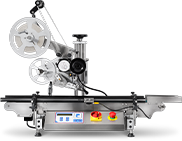
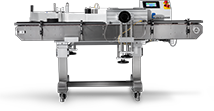
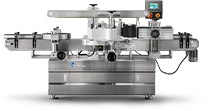

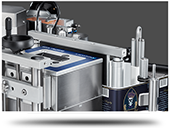
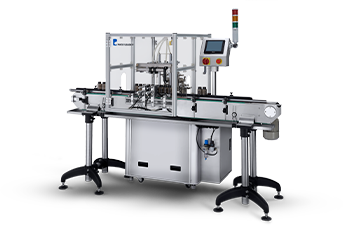
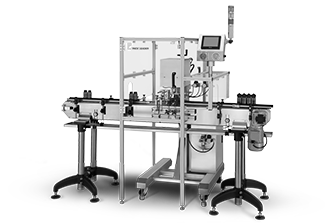
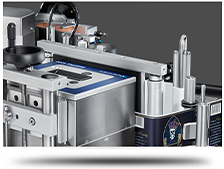







.webp?width=360&name=2x-color-logo%20(1).webp)